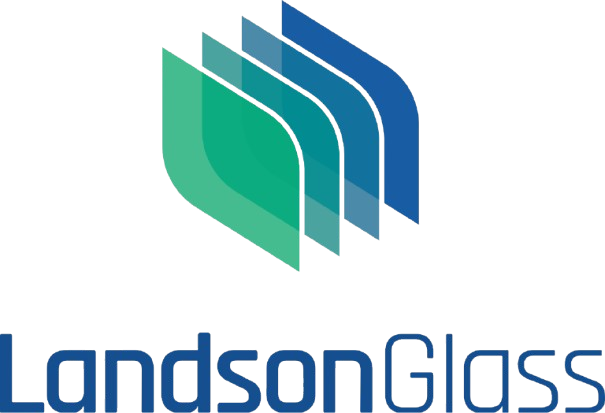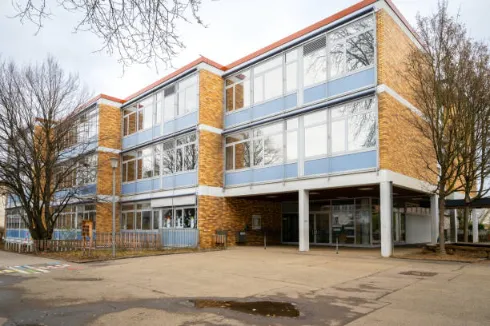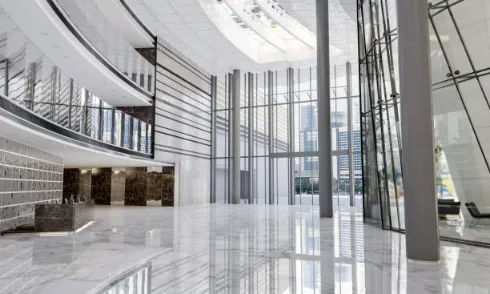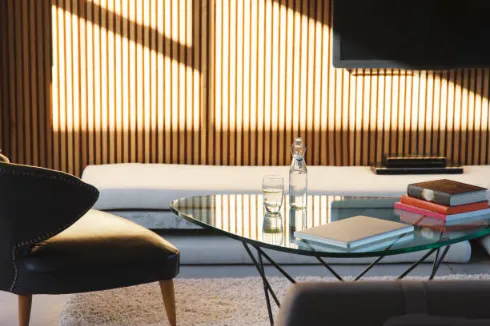
Introduction
Glass in schools isn’t just for letting in sunlight. It keeps kids safe in busy hallways and loud classrooms. Schools are lively places, students run, bags swing, and sometimes a dodgeball goes wild. Broken glass can make a bustling corridor dangerous.
Types of Safety Glass
Tempered Glass
Tempered glass is super tough. It’s four to five times stronger than regular glass because of a special heat process. If it breaks, it turns into tiny, dull bits instead of sharp pieces. That’s why it’s great for busy spots like hallway windows or glass doors. It also handles heat changes well, so it won’t crack near a hot radiator. Schools use tempered glass for inside walls where you want to see through but need safety first.
Laminated Glass
Laminated glass is like a sandwich with two glass layers stuck together by a plastic middle, usually PVB or EVA. If it breaks, the plastic holds the bits in place, so there’s no mess of sharp chunks. It’s awesome at blocking noise, which helps in classrooms where teachers need quiet for teaching. It’s also strong against bumps, making it perfect near gyms or cafeterias. Plus, it blocks some UV rays, which helps keep classroom posters from fading.
Wired and Fire Rated Glass
Wired glass has a metal mesh inside, which keeps it together under stress or heat. It’s not used much anymore but still shows up in places like fire escapes. Fire rated glass is built to handle flames and heat for 30 to 120 minutes. That’s key for exit paths or stairwells, giving kids time to get out safely. These types focus on function over style, but they’re critical in emergencies.
Key Safety Standards for Educational Buildings
Global Testing Standards
Safety glass has to pass tough tests to prove it’s safe. In Europe, EN 12600 checks how glass handles swings that mimic a person bumping into it. In the U.S., ANSI Z97.1 does drop tests to rate glass safety. These tests give glass a score, kinda like a grade for toughness. Higher scores mean the glass can take harder hits, like from a stray backpack or elbow.
Compliance and Building Codes
School rules for glass are strict, and that’s a good thing. Hallways, gyms, and classrooms often need safety glass to meet local laws. For example, gym windows must handle a volleyball smash. Before putting in glass, check the maker’s certificates. Skipping this can lead to fines or, worse, hurt kids. Here’s a tip: always ask for test reports to avoid trouble later.
Selecting the Right Glass for Each School Zone
Classroom Windows and Partitions
Classrooms need light to keep kids focused, but noise can mess things up. Laminated glass is a great pick. Its plastic layer cuts down sound, so teachers can teach without distractions. It’s also sturdy enough for the occasional chair bump or dropped book. For walls between rooms, laminated glass lets light in while staying safe. No one wants a glass wall breaking during a fun group project.
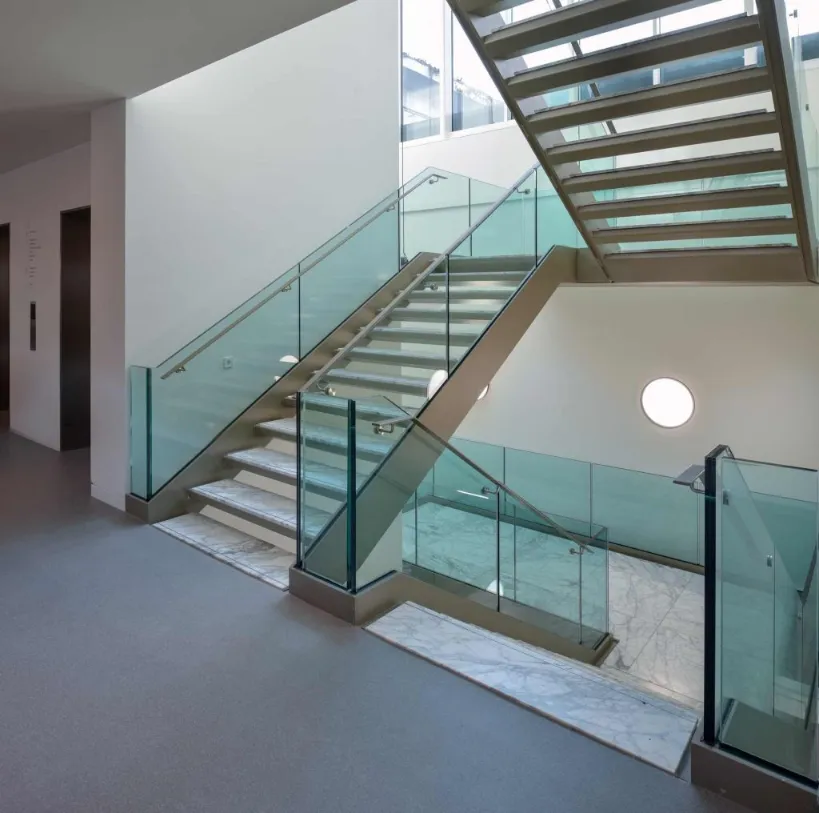
Corridors and Common Areas
Hallways are wild, kids rush, bump, or goof around. Tempered glass works well here because it’s strong and breaks safely. Laminated glass is good too, especially where impacts might be harder. Smooth edges and solid frames stop tiny cracks that weaken glass over time. Landson Glass provides tempered and laminated glass panels built for busy spots like corridors, keeping things visible and safe. A bit of care with frames makes a big difference.
Laboratories and Workshop Spaces
Science labs and workshops are risky. Chemicals, tools, and clumsy experiments up the danger. Multi layer laminated glass is the way to go. It’s extra tough and resists some chemicals. If a beaker flies or a hammer drops, the glass stays together. It’s not perfect, but it’s a strong shield for hands on learning.
Practical Considerations Before Installation
Maintenance and Cleaning
Glass in schools gets messy, fingerprints, smudges, or marker streaks. Check it twice a year for cracks or chips before they get worse. Anti scratch coatings keep glass looking clear even after lots of cleaning. By the way, those “amazing” cleaning sprays online? Often a waste of cash. Use basic glass cleaner and a soft cloth instead.
Framing and Fixing Systems
Good frames are like a hug for glass. Flexible ones soak up impact, so the glass doesn’t feel the stress. Bad frames can cause cracks by putting pressure in one spot. Use quality sealants and double check alignment when installing. It’s not fancy, but it saves headaches later.
Cost vs. Safety Trade offs
Top notch safety glass costs more, but cutting corners can hurt more. One injury lawsuit can cost way more than good glass. Schools on a budget can still stay safe by picking certified products and planning smart. Landson Glass helps contractors and architects balance cost, safety rules, and long lasting quality when choosing school glass. A little planning saves money and keeps kids safer.
Emerging Innovations in School Glass Safety
Smart and Switchable Glass
Smart glass is pretty cool. It can go from clear to cloudy with a switch, giving privacy for tests or talks. It also saves energy by cutting down on blinds or curtains. Schools with tight budgets might pause, but it can save on utility bills over time. Picture a classroom dimming its windows during a sunny quiz, that’s the future.
Anti Shatter and Acoustic Technologies
New plastic layers make laminated glass even stronger. Some block more noise than before, great for schools near loud streets. Others resist breaking under big impacts. Down the road, glass might do safety, soundproofing, and energy saving all at once. Green schools are coming, and glass is a big part of that.
Conclusion
Safe glass isn’t just about dodging accidents. It makes schools better places to learn. Bright, secure classrooms and hallways help kids do their best. Always pick certified, impact resistant glass that fits each area’s needs. Landson Glass works with architects and builders globally, offering certified safety glass for classrooms, corridors, and busy spots. Choosing the right glass now means safer, happier schools later.
FAQ
Q1: What’s the difference between tempered and laminated glass?
Tempered glass is heat treated to be strong and breaks into small, safe bits. Laminated glass has a plastic layer that holds it together if broken, plus it cuts noise and blocks UV rays.
Q2: Is safety glass required in all school areas?
Most rules require safety glass in busy spots like hallways, gyms, and classrooms. Check local laws to be sure.
Q3: How often should school glass be inspected?
Twice a year’s good, before and after the school term. Look for cracks, chips, or loose frames.
Q4: Can smart glass be used in classrooms?
Yup, it’s great for privacy and saving energy, but it costs more. Best for multi use rooms or big budget projects.
Q5: Where can schools find certified safety glass?
Trusted suppliers give test reports and certificates. Always check before buying.
